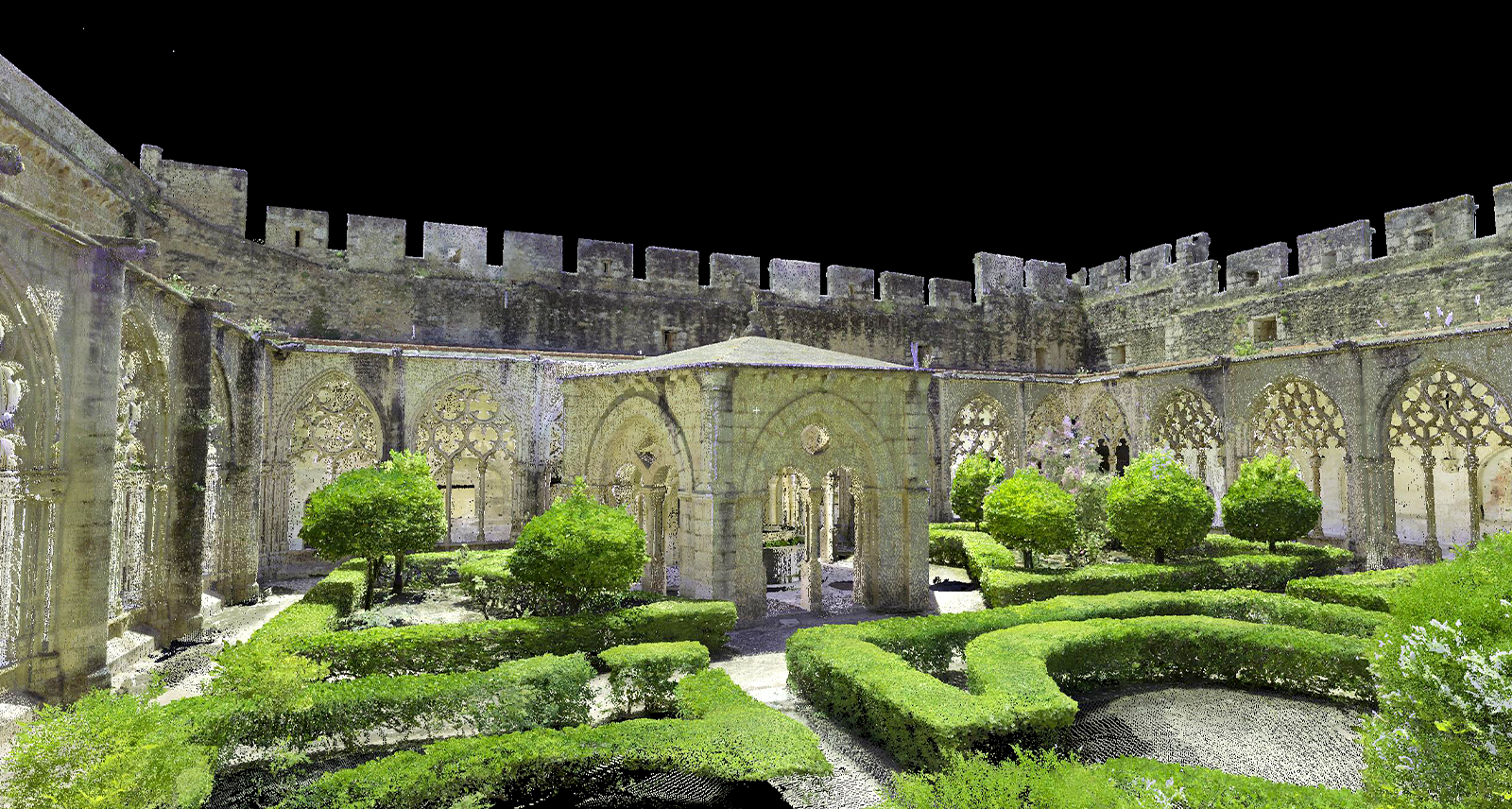Catalan Culture in 3D
Digitising and Sharing Historic Sites with Laser Scanning

Catalonia’s long and rich multi-cultural history is physically embodied in the historic artefacts and structures that remain throughout the diverse region. Desiring not only to preserve but promote the cultural treasure trove represented in churches, factories, palaces, and more throughout Catalonia, the Catalan Ministry of Culture set out to apply new approaches to heritage conservation.
The resulting project, Giravolt, uses 3D digitisation to make Catalan heritage accessible and engaging for everyone. By capturing highly accurate spatial data and imagery of Catalan historic sites with Leica Geosystems laser scanning technologies, the Giravolt team transforms these sites into 3D models supplemented with additional media to enable a new experience of historic spaces. Collaborations with artists, academics, and restoration specialists enable Giravolt to capture an exact record, preserving the past and pursuing restoration and interactive education into the future.
Preserving History and Promoting Culture Through 3D Digitisation
The aims of the Giravolt project are aspirational and multifaceted. Using 3D laser scanning technology, the Grivaolt team captures, represents, and shares a diverse range of Catalan historic and cultural sites and artefacts, from a 12th-century monastery to renaissance statues to a 20th century cement factory, and many more.
Beyond this, they hope to empower teaching, exploration, and expression of Catalan cultural heritage with scientific and artistic techniques, blending mediums to enhance public engagement. Additionally, and critically, Giravolt uses the captured data to evaluate historic structures, determine if restoration is necessary, and provide guidance on the urgency of interventions.

Lluis Gonzalez, a specialist in laser scanning, is leading the reality capture efforts for the Heritage Department of the Generalitat de Catalunya, the region’s local government, and has captured many sites for the Giravolt project. He shared with us more about their mission, the technical processes and scanning strategies, and expanding outcomes of this important cultural work.
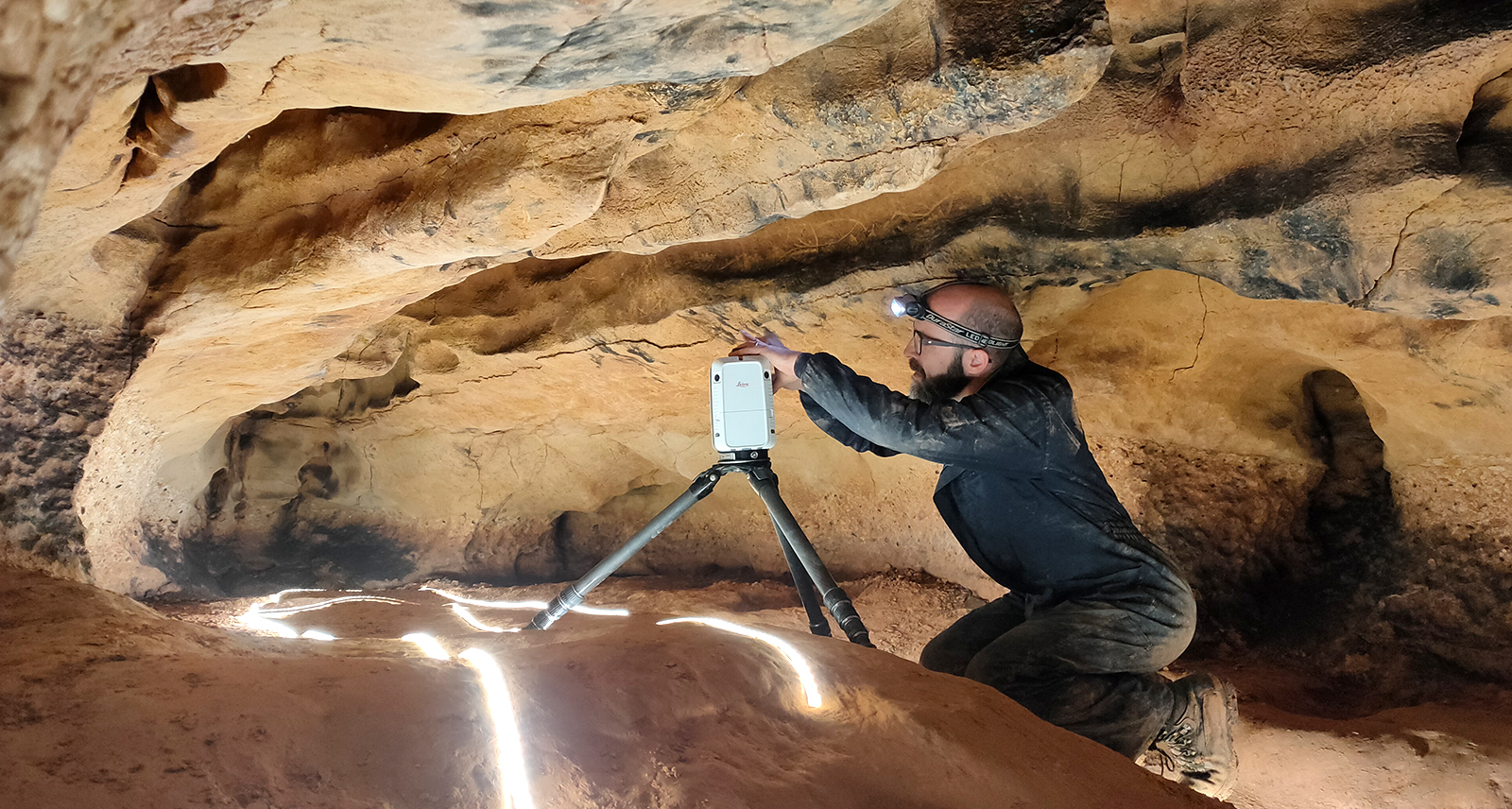
“The target of the project is to provide 3D models to the general public, offer data for research investigations and teaching across education levels, and overall to enable us to analyse damage and decide what actions will best preserve these sites,” says Gonzalez, detailing the range of uses for their point clouds.
All about the Details: Scanning Strategy
Given the diverse purposes and audiences for this digital data, capturing accurate and complete details of the historic sites is critical to the Giravolt project and requires a well-planned approach. Gonzalez is responsible for defining and executing these scanning strategies.
“It is important to fully document the site, including different angles of the building, so we can create a very detailed point cloud,” explains Gonzalez. “Before scanning a building, I complete a visual inspection to define the scanning strategy, including how many setups we will need.”
In practice this translates into 40-60 scan positions for smaller buildings and up 200 plus scans for larger structures. Additionally, after reviewing the initial captures, more scans may be required to fill in data gaps or optimise the data.
The hardware capabilities are integral to this planning process. Gonzalez has used Leica Geosystems laser scanning technologies for over five years and is currently scanning sites with the Leica RTC360. As a portable scanner that can capture millions of points per second, along with 360-degree imagery, and pre-register scans in the field, the RTC360 is an effective tool for Gonzalez’ high-accuracy heritage scanning.
Every project is also split into sections, and each section is individually captured and processed before moving onto the next. This way, they scan, process, and capture additional data or make corrections if needed.
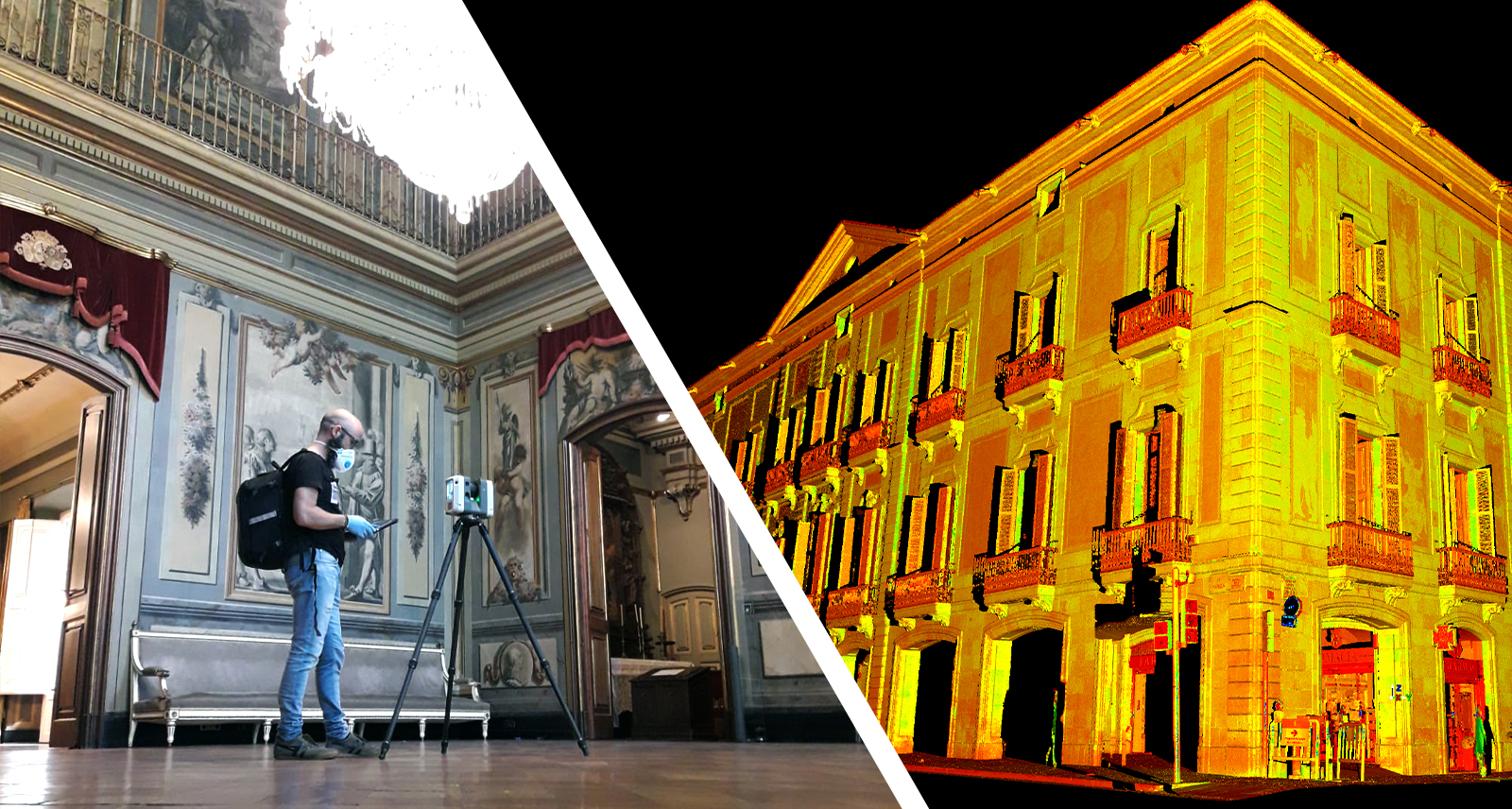
207 Setups: Scanning a Cement Factory with the Leica RTC360
The recent capture of the early 20th-century Asland Cement factory, requiring 207 scan setups across a multi-level and partially dilapidated structure, demonstrates the strategic scanning process necessary to accurately capture the true condition of such an extensive site.
Built in 1901, the Asland Factory was the first industrial cement factory built in the region, making it a strong representative of the prosperous industrial history of Catalonia. Built into the mountainous landscape and abutting a river to take advantage of hydropower, the factory was on the forefront of efficient design during its day, and details like arched openings and vaulted roofs imbue extra aesthetic and architectural interest.

–Source:Departament de Cultura de la Generalitat de Catalunya
The factory, which closed in 1975 but was partially restored and reopened as the Asland Cement Museum in 1992, was one of Gonzalez’ favourite captures so far across the Giravolt project, posing special challenges from tight corridors to navigating dangerous spaces with compromised structural integrity. Benefitting from the compactness and high accuracy of the RTC360, Gonzalez was able to capture even these difficult spaces with required completeness.
Once fully processed, the data collected will not only be featured as 3D models available on Giravolt’s website and SketchFab channel but will also enable analysis for future preservation actions.
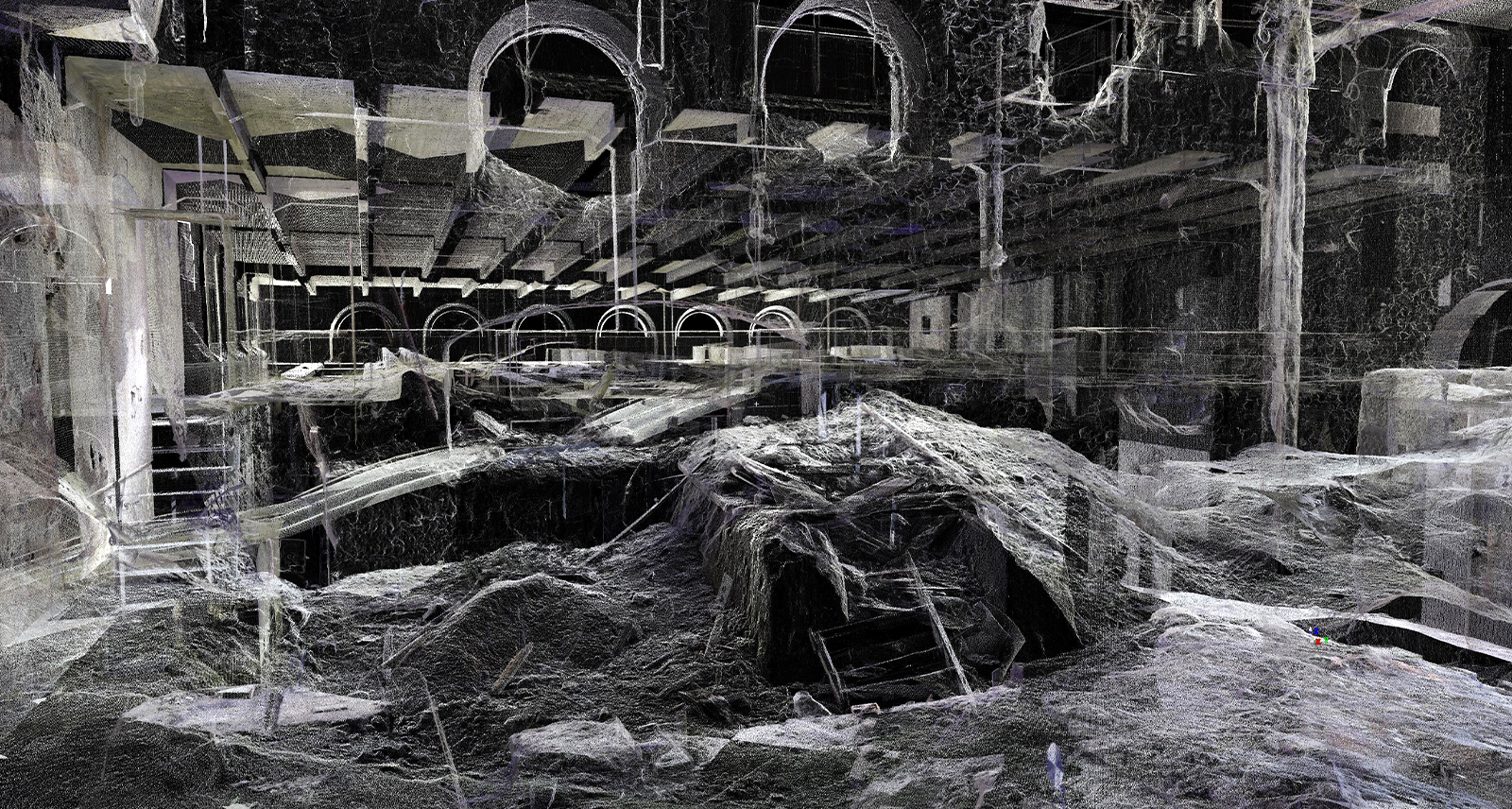
–Source:Departament de Cultura de la Generalitat de Catalunya
Post-Processing for Multiple Purposes
After initial captures and processing, Gonzalez and team work with the point clouds in a variety of post-processing procedures to ensure the data is ready for display and analysis.
“We import the data and clean the point cloud before equalising the colour in Leica Cyclone REGISTER 360 Plus or Leica Cyclone CORE for more complex processing jobs,” Gonzalez explains. “Then we are ready to move onto final deliverables, like drawings or 3D models.”
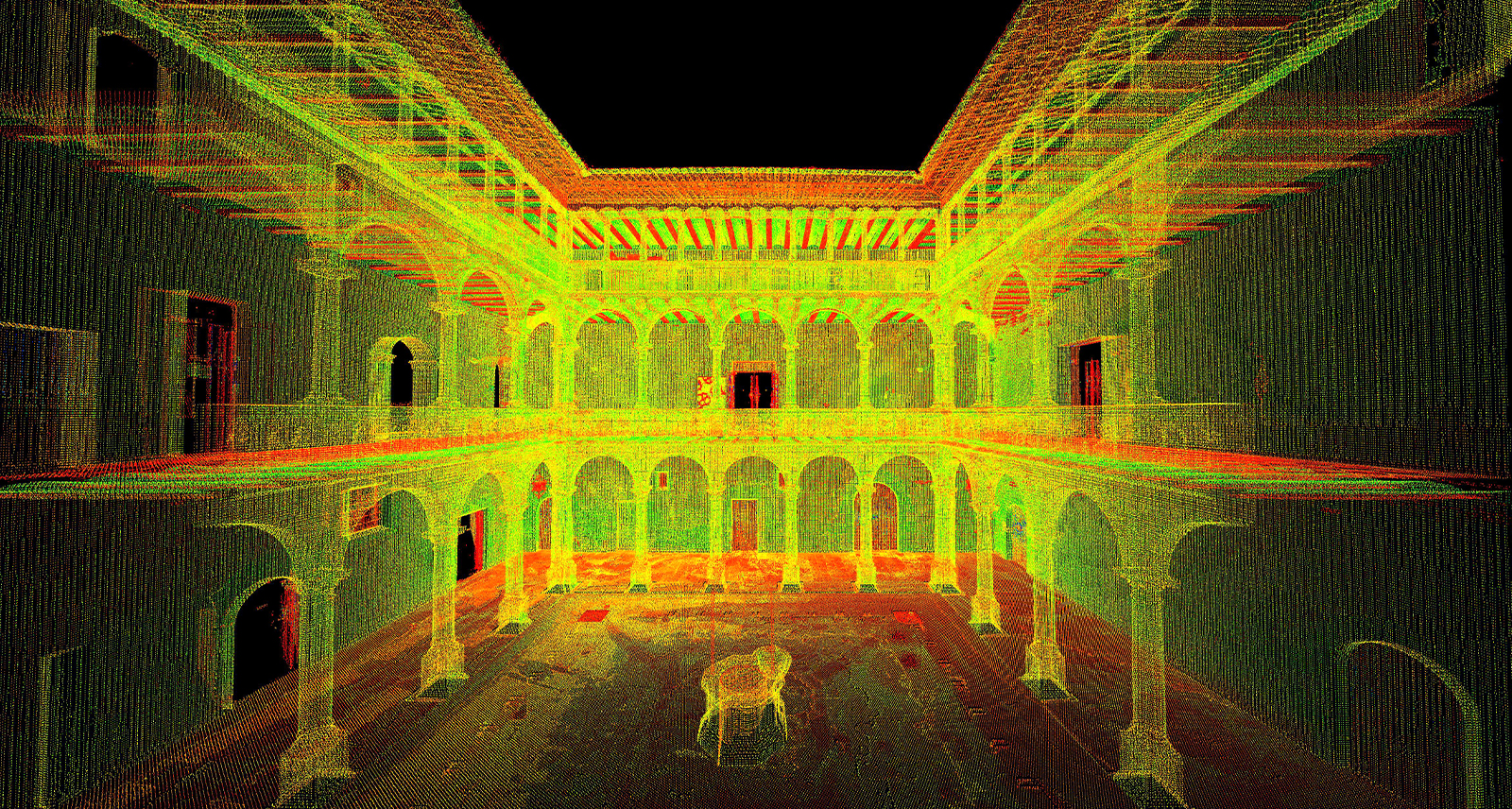
For example, they can create videos that fly through the point cloud and fuse point clouds with images to represent diverse angles and structural perspectives. They also export their point clouds to 3D models in a viewer and create meshes using Leica Cyclone 3DR and other reality capture software. After applying colour to the 3D meshes, they are ready for upload into SketchFab, providing an easy way to share their models with the public.
Giravolt also offers its data to researchers and educators for external deliverable creation: “We want to enable professors and teachers to use these rich data sets for their own investigations or to develop activities, and for this reason, Leica TruView is an important tool enabling them to access the dense point cloud,” says Gonzalez.
Beyond Preservation: Point Cloud Data Enables Restoration and Public Engagement
Another crucial aspect of the Giravolt project is aiding restoration and reconstruction efforts.
“After capturing the reality with laser scanning, I use the data to advise on decisions about the future actions required for these heritage sites,” Gonzalez continues.
The high-accuracy and detailed data enables him to create architectural drawings and perform intricate analyses, like determining wall and roof surface deformations.
Their current work documenting the Monastery of Santa Maria de Santes Creus, a 12th-century Cistercian abbey and the final resting place of the region’s royalty across the centuries, demonstrates the breadth and impact of their mission within one project. With many aristocratic benefactors, the monastery continuously expanded into the 18th century to form the extensive gothic-style complex that stands today and comprises, brick by brick, 400 years of culture and history.
A detailed architectural drawing of the Monastery of Santa Maria de Santes Creus enabled by high-accuracy scanning data.
–Source: Departament de Cultura de la Generalitat de Catalunya
Using scanning and photogrammetry, Gonzalez and team captured the monastery and used the data to determine the extent of damage and types of restoration work required. Now undergoing a three-year partial closure during rehabilitation, Giravolt is providing a way for the public to stay connected to this iconic site despite closed doors.
Their point clouds contribute to an immersive heritage documentation, enabling the public to virtually view and join the journey of the preservation process throughout the years. Once restoration works are completed, they will once again scan the monastery, providing a full record and way to experience the extent of the rehabilitation.
This annotated 3D model of the cloister of the Royal Monastery of Santa Creus offers a virtual walk-through where visitors can explore the early 14th-century Gothic architecture in detail. – Source: Departament de Cultura de la Generalitat de Catalunya
“When many people see this reality capture material for the first time, they are wowed by the results and feel it is spectacular. People like politicians see the 3D models and envision how they can use them to bring more people to the sites and increase engagement,” reflects Gonzalez.
In these ways, Giravolt’s digitisation of heritage sites has many tangible, positive impacts for Catalonia, achieving their mission to honour, preserve, and share Catalan culture.























